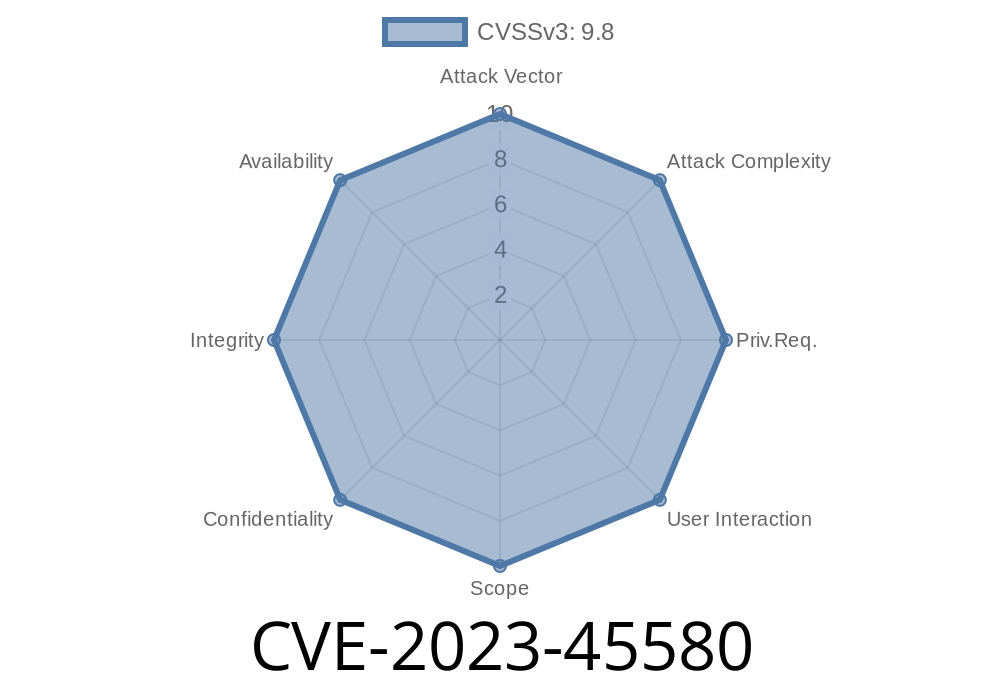A critical security vulnerability, identified as CVE-2023-45580, has been discovered in several D-Link devices, making it possible for remote attackers to execute arbitrary code. This buffer overflow flaw sits within the handling of parameters like wild/mx and others through the ddns.asp web function. If you're using these affected D-Link products, you need to know how the exploit works and how you can protect your network.
DI-740G+V2.D1 v.23.08.23D1 and before
If you use any of these routers and haven't updated to patched firmware, your network could be exposed.
The Vulnerability Details
At its core, the problem is a classic buffer overflow in the web interface for DDNS (Dynamic DNS) management. Specifically, the firmware does not properly check the length of user-supplied parameters (like wild, mx, hostname, etc.) when handling requests sent to the ddns.asp endpoint.
This allows a remote attacker to craft HTTP POST or GET requests with overlong data, causing the software to overwrite vital memory structures. With careful manipulation, this can result in remote code execution with the privileges of the web server — typically, root access.
Where the Problem Lies
In the firmware’s web interface code, parameters from requests are copied into fixed-length buffers without adequate length checking. Here’s a simplified example based on typical firmware behaviors:
void handle_ddns_request(http_request *req) {
char wild[64];
strcpy(wild, http_get_param(req, "wild"));
// ... other handling
}
If the attacker sends a "wild" parameter longer than 64 bytes, memory beyond the wild buffer gets overwritten. By carefully constructing the input, the attacker can overwrite function pointers or the stack, leading to code execution.
Sending a Malicious Request
The attacker can simply interact with the DDNS endpoint using curl or a similar tool. Here’s a minimal example (for research purposes only):
curl -X POST \
"http://<router-ip>/ddns.asp"; \
-d "wild=$(python3 -c 'print("A"*80)')&mx=example.com"
In this example, the 'wild' parameter is set to a string of 80 'A' characters — more than enough to overflow a 64-byte buffer.
To weaponize the overflow, attackers might insert shellcode or a ROP (Return Oriented Programming) chain tailored to the router’s architecture.
Detection
A network administrator can look for unusual long parameters in web access logs related to ddns.asp, or use a vulnerability scanner that checks for buffer overflows.
Remediation
1. Update Firmware: D-Link is pushing out fixed firmware for the affected devices. Download and apply the latest firmware from D-Link Support.
2. Firewall: If a firmware update is not available, restrict remote HTTP access to the router until a fix can be applied.
Additional References
- NIST National Vulnerability Database - CVE-2023-45580
- D-Link Security Advisories
- Official D-Link firmware download center
Conclusion
CVE-2023-45580 is a severe flaw that affects a range of D-Link routers. Anyone using one of the listed models should check for firmware updates and restrict web access to critical endpoints. This vulnerability highlights the ongoing importance of careful input validation and regular device patching.
Timeline
Published on: 10/16/2023 07:15:09 UTC
Last modified on: 11/03/2023 19:04:23 UTC
